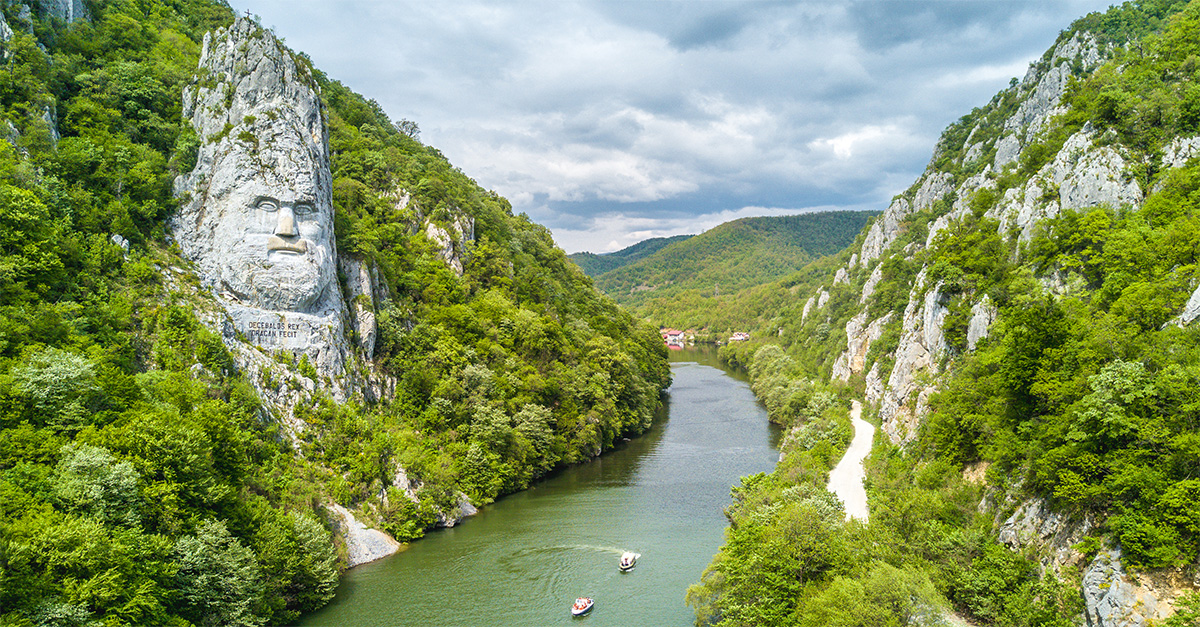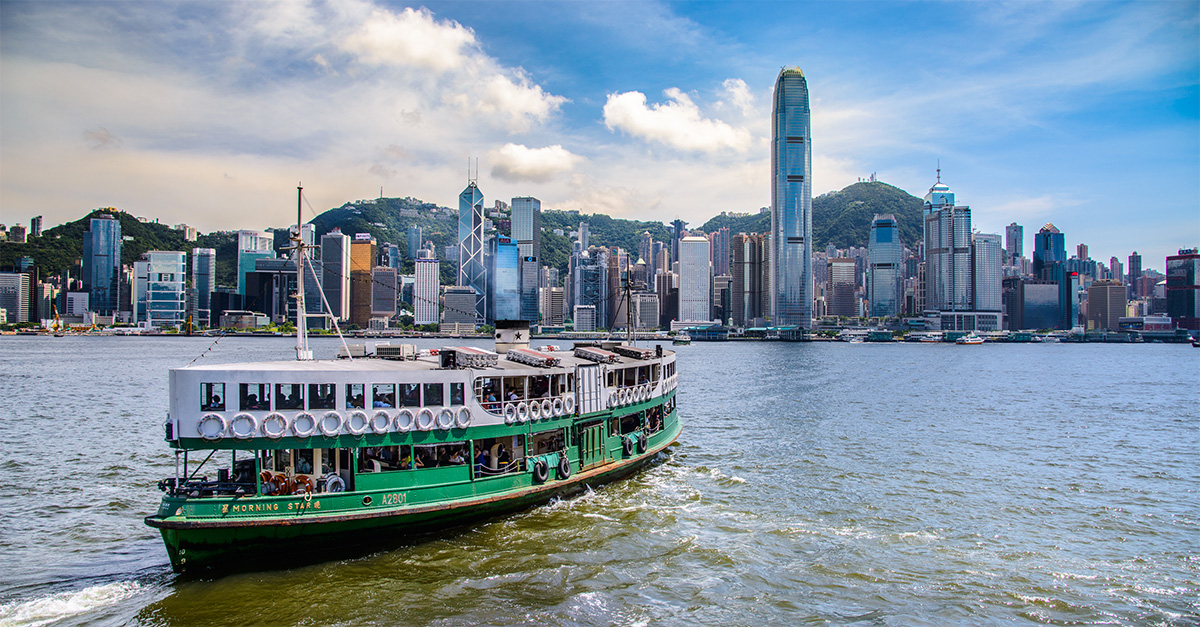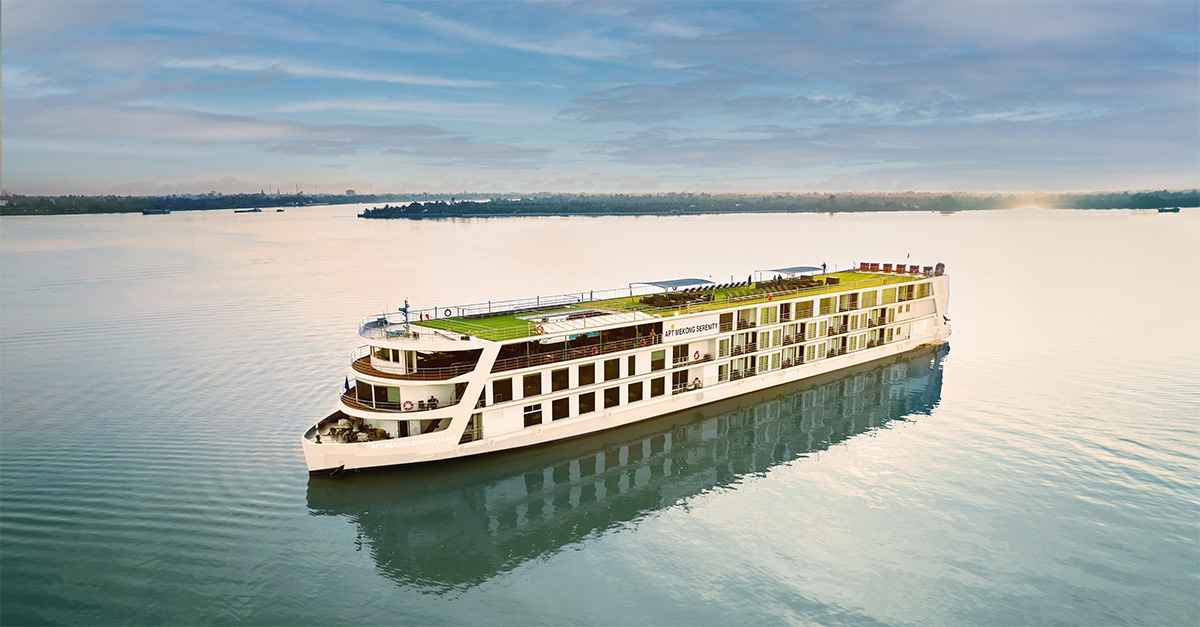Katie McGonagle finds out how to sell heritage sites on the coast near Portsmouth.
Click here to download and save as a PDF.
Between brightly coloured beach huts lined up along the coast, kids furiously licking 99 flakes, deckchairs sitting in the shade of stripy windbreakers and even a little heritage railway pootling past the seafront, this could have been the British seaside circa 1950, not just this month.
In fact, the only thing that seemed out of place here was the blazing sunshine bathing us in 30C heat – but let’s not look a gift horse in the mouth.
We were on the seafront of Hayling Island, the islet just off the south coast between Portsmouth and Chichester Harbour, connected by a road bridge to the mainland and within easy reach of its much bigger neighbour, the Isle of Wight.
This classic British seaside resort is much beloved of water sports fans, who could be seen dragging tiny dinghies and kayaks into the water – it’s even the spot where windsurfing was invented. Yet it’s also a good base for a leisurely tour of some south coast history, from Roman ruins and medieval cathedrals to Henry VIII’s seafaring escapades.
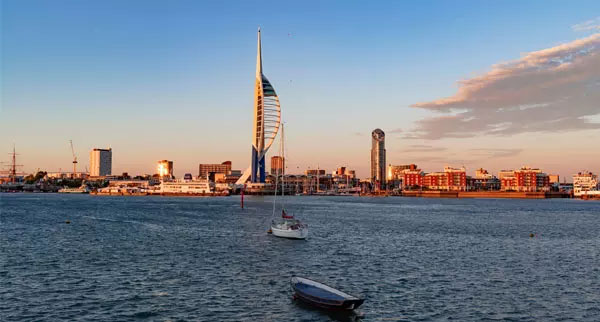
Hayling island
It’s been a seaside resort for pretty much as long as the British public has been flocking in search of sand and sea (and if they’re lucky like us, sun), with its first hotel opening in 1825.
So no wonder it’s where Captain Harry Warner chose to build a series of holiday camps in the 1930s, including Coronation Camp in 1937, taking its name from King George VI’s accession to the throne that year. Other than a brief interlude as Second World War naval barracks HMS Northney, it’s been bringing British holidaymakers to the seaside ever since – albeit now under a new name, Lakeside Coastal Village.
“There’s a pleasant seafront cycle route, or for less-mobile visitors, a two-mile narrow-gauge railway connecting Beachlands and Eastoke Corner.”
It’s just a few minutes’ drive or a pleasant walk from the seafront, which is mostly shingle bar a few sandy spots at low tide. There’s a pleasant seafront cycle route, or for less-mobile visitors, a two-mile narrow-gauge railway connecting Beachlands and Eastoke Corner that runs on Wednesdays and at weekends, or daily in the school holidays.
Alternatively, follow the route of the original Hayling Billy rail line along the west coast, either by bike or on foot, for fantastic views across the harbour to Portsmouth, and the reward of a pint in The Ship Inn. Download free maps at cyclehayling.org.uk.

Chichester
After exploring the mostly residential Hayling Island, visitors can strike out to see the rest of the south coast, starting with the grandest site of all, Fishbourne Roman Palace.
This enormous villa is one of the oldest in the country, dating from 75 AD – pretty impressive when you consider it’s bigger than Buckingham Palace – and home to an array of fantastically preserved mosaics, including the most famous, Cupid on a Dolphin. Even if visitors don’t think they’re interested in ancient history, this site cannot fail to inspire, especially with the range of events this year marking 50 years since its opening. Entry is £9.50 for adults, £8.80 for seniors and £4.90 for under-16s.
“This enormous villa is one of the oldest in the country, dating from 75 AD – pretty impressive when you consider it’s bigger than Buckingham Palace.”
Chichester has plenty to inspire too, from its Roman roots to the Chichester Cross – once a meeting place and market – that dominates its centre. It’s just steps from Chichester Cathedral, another landmark as extraordinary for its long history (it was built in 1075, so there’s nearly 950 years of it) as for its magnificent interior. We ducked in just before an ordination ceremony took place, but still managed a glimpse of the splendid stained-glass window in the South Transept, before stopping for coffee in the charming Cloisters Cafe. Entry to the cathedral is free but donations are encouraged.
Follow with a gentle stroll around the city’s cobbled streets, then return via the incredible protected landscapes of Chichester Harbour, an area of outstanding natural beauty.
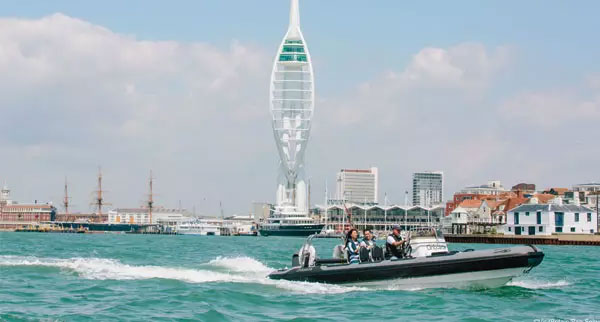
Portsmouth
The city seafront of Portsmouth might be more built up, but it still has its attractions – not least the chance to have a picnic in the shade of Southsea Castle, a Tudor fort said to have been designed by Henry VIII himself to fend off a French attack.
It was from the castle that the king watched the sinking of the Mary Rose and the drowning of hundreds of men in the Battle of the Solent in 1545. The ship went down with such force that its keel was buried deep in the seabed mud, preserving it for centuries.
It wasn’t until 1971 that the ship was discovered, putting in motion an 11-year effort (with input from Prince Charles) to raise it from the depths. It’s now on show in one of the UK’s most exciting new museums of the past decade, The Mary Rose in Portsmouth Historic Dockyard. It opened in 2013, but it was only in 2016 that the conservation process – preserving the fragile timbers of the 500-year-old ship – was completed, allowing visitors to view it without any glass barrier.
“If visitors still have energy to spare, they should head to the top of the Spinnaker Tower at Gunwharf Quays, to take a look across the city and the Solent.”
The museum is an atmospheric journey not just through the history of the ship and its sailors – by way of objects uncovered in the surgeon’s cabin, the kitchens and even the pockets of the men – but also through historians’ efforts to piece the story together using every clue available.
“It’s a time capsule of that history,” says bookings coordinator Kayleigh Deak. “The wreck is amazing but having the personal items of the sailors on display, that’s what tells the story. That was always the goal.”
Entry is £16 for adults, £14 for concessions and £8 for children aged five to 15.
If visitors still have energy to spare, they should head to the top of the Spinnaker Tower at Gunwharf Quays (£9.90), to take a look across the city and the Solent just like Henry VIII – now that’s the Great British seaside
at its best.
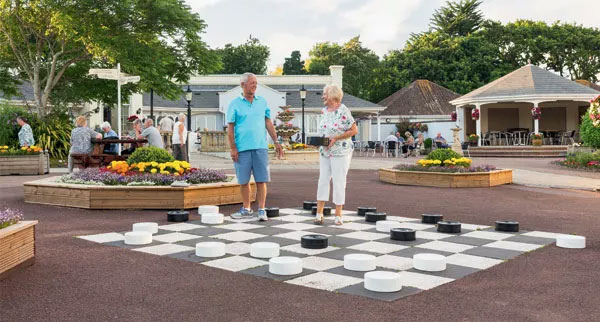
Tried & tested: Lakeside coastal village, Hayling Island
This chalet-style resort has come a long way since it opened in 1937, not least with the addition of Woodland Lodges this year – pretty ice cream-coloured cottages that come with a private deck and comfortable Adirondack chairs, ideal for a pre-dinner drink.
It’s a quiet, low-rise resort edged by a swan lake every bit as serene as it sounds, particularly if guests bring their fishing rods. Activities include a big indoor bowls centre plus petanque, archery and a swimming pool.
“If clients are keen on their music, book a weekend festival break, so they can see their favourite act live.”
The restaurant serves up British classics and a daily carvery, and guests remain at their tables for the evening entertainment, which varies from cheesy magicians to musicians belting out Motown classics and pop hits to suit its older demographic. If clients are keen on their music, book a weekend festival break, so they can see their favourite act live.
Book it: A three-night break in a Woodland Lodge at Lakeside Coastal Village starts at £255 per person arriving September 28, including the Simply Dine package comprising breakfast and three‑course evening meal.
warnerleisurehotels.co.uk
Read more
A weekend in the historic city of Bath, Somerset
Sailing around Scotland on Hebridean Princess
Get festive on a Christmas staycation


